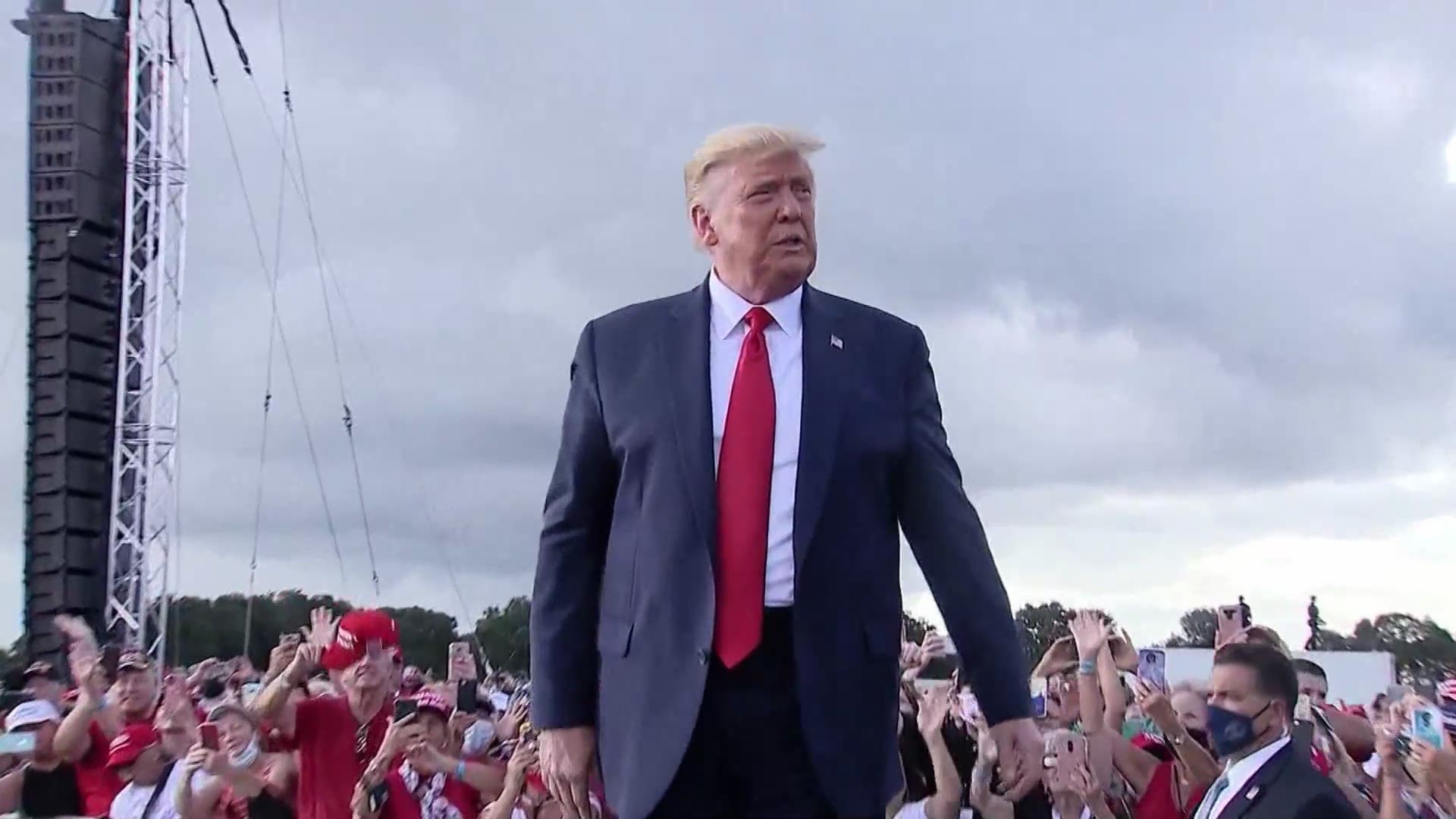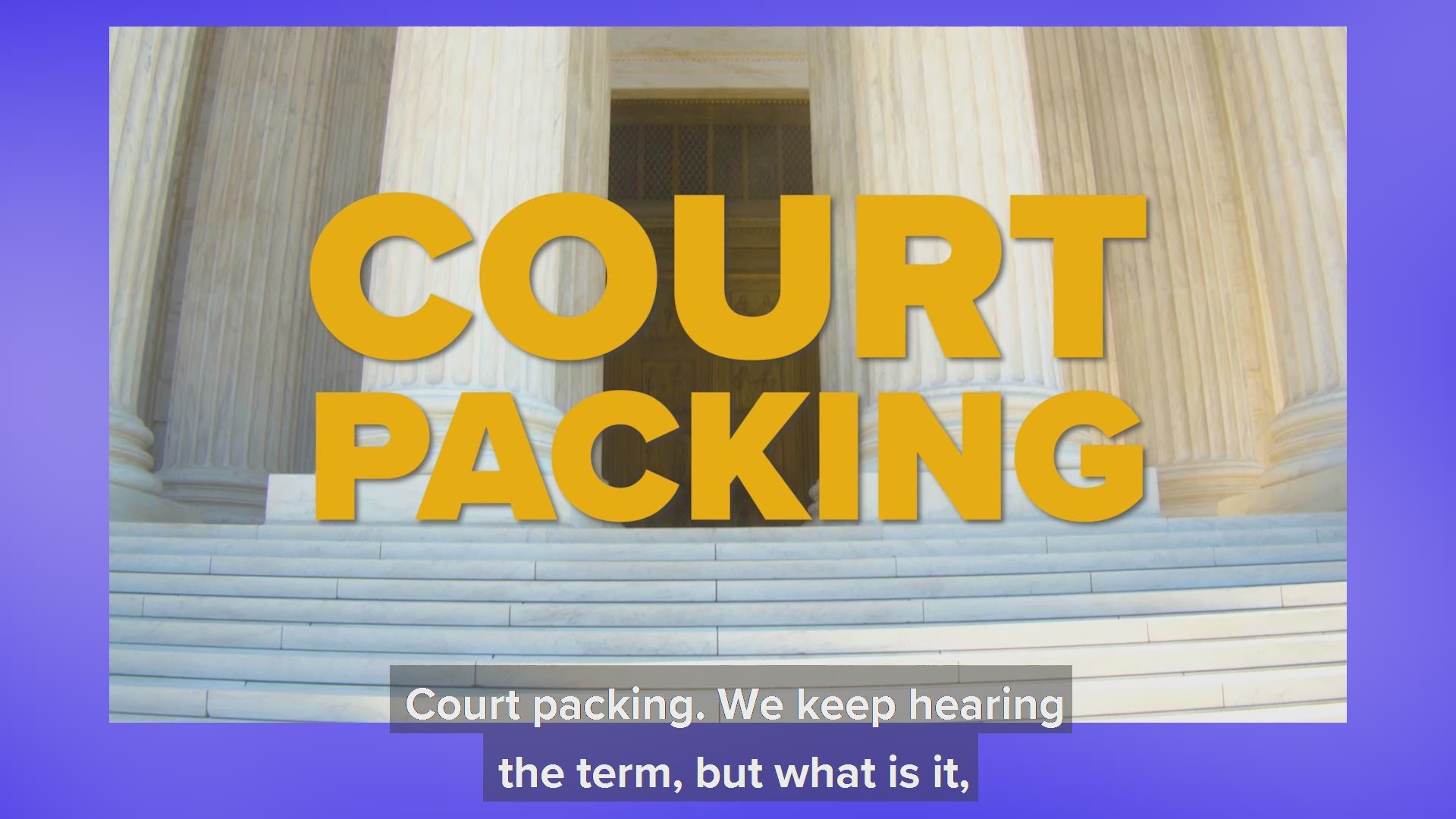WASHINGTON — QUESTION:
Now that Democrats control the House, Senate and Presidency, do they have a constitutional path to pack the Supreme Court?
ANSWER:
Yes, if Democrats vote along the party line, they do have a path to pack the Supreme Court. But it requires an extra step in the U.S. Senate.
SOURCES:
- Molly Reynolds, Senior Fellow at the Brookings Institution, specializing in Congressional Rules and Procedures
- Peter Shane, Constitutional Law Professor, Ohio State University Law School
- Robert Peck, President of the Center for Constitutional Litigation
WHAT WE FOUND:
“Court-packing” became a huge point of contention during the 2020 election. After the controversial appointment and expedited confirmation of Justice Amy Coney Barrett, would Joe Biden, if elected President, attempt to add justices to the U.S. Supreme Court?
In October, President Biden promised, if elected, to form a bipartisan commission to recommend changes to the Supreme Court.
“There are a number of alternatives that go well beyond packing,” President Biden told 60 Minutes.
While we can’t say with any certainty what President Biden or Congressional Democrats will do, experts say they do have a path to add Supreme Court justices.
How does 'packing the court' work?
“It’s done by simple legislation,” Robert Peck, President of the Center for Constitutional Litigation, explained.
Congress can change the size of the Supreme Court by passing a bill with a simple majority in the House and Senate, both of which the Democrats control since Vice President Kamala Harris breaks the 50-50 tie in the Senate. President Biden’s signature is the final hurdle to pass such legislation.
“If they vote along party line, [Democrats] would have enough votes to pass legislation like that, absent of the filibuster,” Peck said.
The filibuster is where this gets complicated
Forget the marathon speeches: on today’s Senate, when it’s clear a group will filibuster, the chamber moves on to other business.
Overriding a filibuster and ending debate requires 60 votes.
“They would need to pick up 10 additional votes from the Republican side, which seems highly doubtful,” Constitutional Law Professor Peter Shane said.
But the experts say Senate Democrats could block the filibuster with what’s known as the “nuclear option.”
The “nuclear option” is basically a rule change within the Senate that kills the filibuster.
With just a simple majority vote, Democrats can change a Senate procedure. In this case, they could change the rule that 60 votes are needed to end debate and block a filibuster, rolling it back to just a simple majority.
That would let the Senate pass a bill to expand the Supreme Court with just 50 votes and the vice president, and no one could filibuster.
Has the 'nuclear option' been used before?
Yes, it has.
In 2013, Senate Democrats exercised it to eliminate the filibuster for presidential appointees, letting them approve President Obama’s nominees with a simple majority. And in 2017, Republican senators used it to eliminate filibusters for Supreme Court nominees, allowing them to confirm Justice Neil Gorsuch.
“The procedural steps are there,” Molly Reynolds, a senior fellow at the Brookings Institution, said. “It really is a question of, would they want to use them?”
Reynolds specializes in congressional rules and procedures. She says Democrats now have the tools to pack the Supreme Court with a procedural change and party-line vote, but they may not have the political support within the party.
“It's not clear to me that there is support from all of the necessary political actors on the substance and on the politics before we even get to the procedural things that would have to happen in order to pass such a piece of legislation,” Reynolds said.
If just one Democratic Senator decides they are opposed to removing the filibuster, the motion would likely fail.
Democratic Sen. Michael Bennet told WUSA9 that he opposed such a move in 2019. Sen. Joe Manchin echoed this sentiment in a November interview, and recent media reports indicate he won’t vote to kill the filibuster.
THE BOTTOM LINE: Yes, with the “nuclear option” and a party-line vote, Democrats have a constitutional path to pack the U.S. Supreme Court. But it’s unclear if Democratic Senators, as well as Representatives and President Biden, will support such a move.


